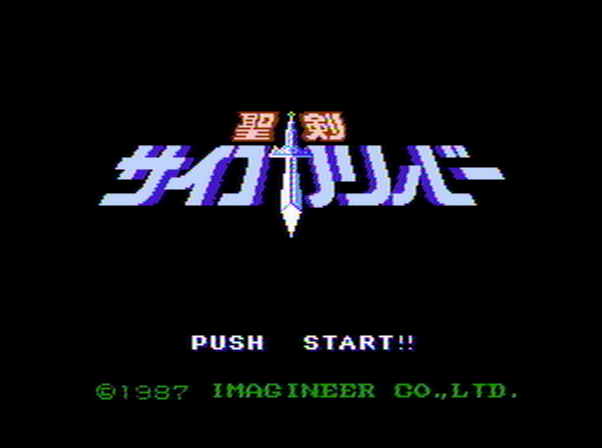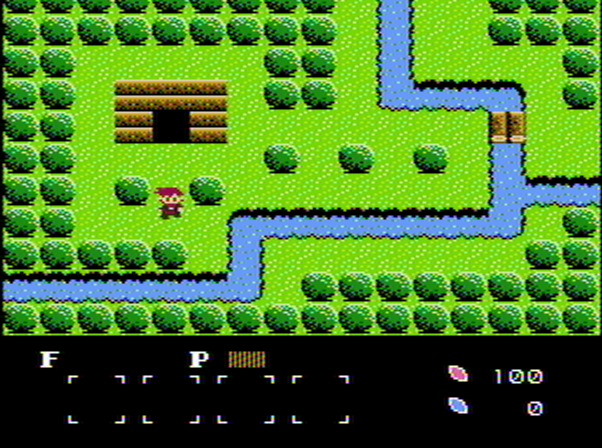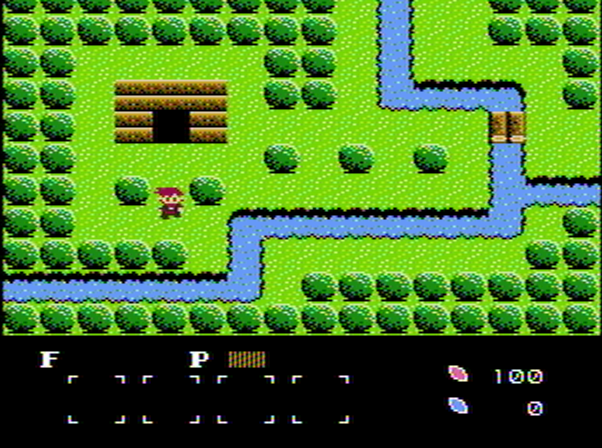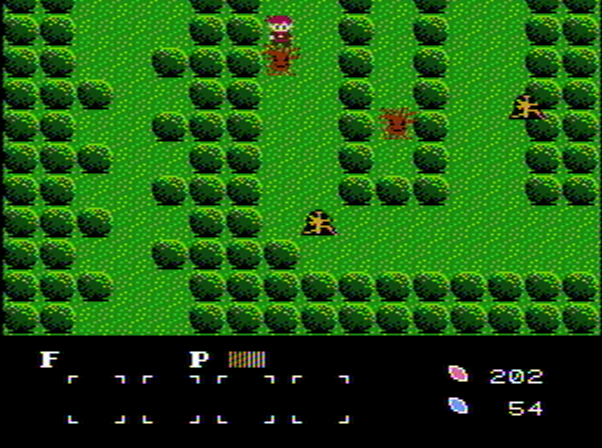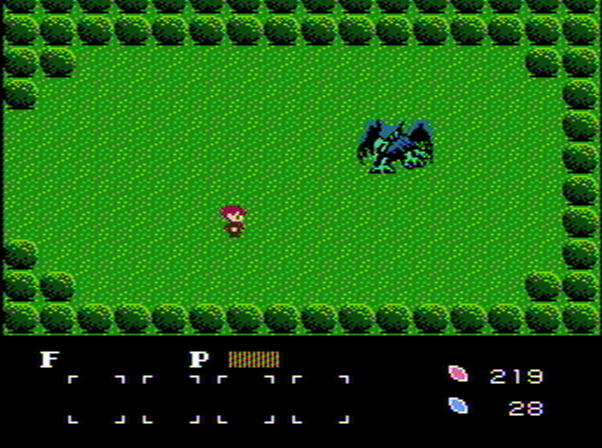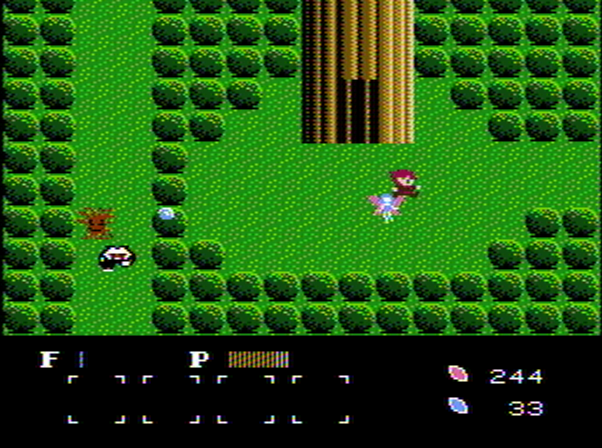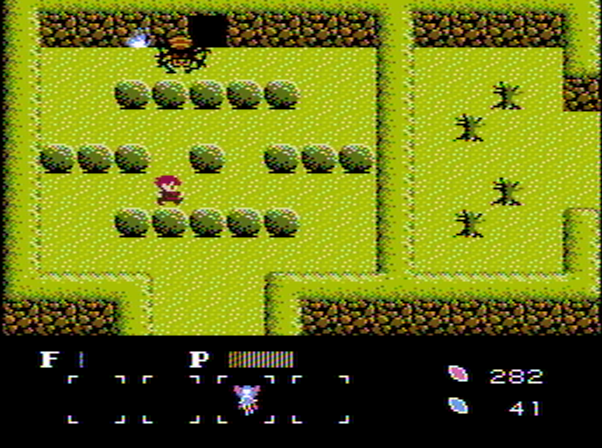Mirai Shinwa Jarvas (未来神話ジャーヴァス), released 6/30/1987, developed and published by Taito

This game has two distinctions — it’s the first 2 megabit Famicom game, and it’s the first Famicom RPG to have a battery backup save system. Unfortunately the designers used these features to make one of the worst games of the system.
The backstory in the manual has little to do with the game. In the far future, humanity has sent out various spaceships. One of them, the Jarvas, returns home after a long journey to find Earth completely changed — all the civilization and technology is gone, and warlords are controlling the Earth that has been overrun with monsters. The main character (one of the Jarvas members) will search the Earth to find out what has happened. However, if you turn to the next page in the manual the “goal” of the game is given as “Defeat the 7 warlords and become king of the unified Earth.” There are no further story developments and the ending scene is basically just a generic “you became king, you win” screen.

As is typical of games of this period, when you start, you get dumped out on a world map with no introduction or indication of what you are supposed to do. The areas in this game are very large, and just getting your bearings and figuring out the basics of the game would take quite a while. It’s an action RPG so you get monsters on the map (like the one at the top right).
You move very slowly, and the attack has almost no reach. It’s rather difficult to learn how to fight the monsters without taking damage yourself. The only way to restore HP is to buy medicine in the towns, so until you can find the first town (which is not especially close to where you start) it’s a rough time. You also can’t level up until you find the town. Here’s a map of the first area to show you how large it is (courtesy of Starfighters76 on GameFAQs, a prolific map creator whose maps I have used several times before):

The majority of the map is empty, with just monsters that appear. Letter A in the middle has an “old belt” item if you search the stump (a villager gives a vague clue about this); apparently you need this item for later. #1 is the town, which should be your first destination.

Until you find the town, you can’t make any progress in the game. The town has six buildings. Three of them are shops (weapon, item, armor). One is a quest house which gives you two possible quests — this is the only way to make money in the game since the enemies drop no money. It’s also a trap because if you pick the second quest, you’re screwed since you have to go to another area to complete the quest and you can’t do that without 100 gold to buy a pass (you start with 80). So you should pick the first quest, the pot.
At the guild you can change class (to Fencer, Fighter, Mage). Fencer seems to be the best choice. You also level up here if you have enough XP; just pick any option and you will level when you leave. The guild also allows you to fight duels, which you need to raise your fame.
Raising your fame is necessary to recruit mercenaries, which you need to do in order to pass the barriers to the castles (#4 in the map above) — the goal of the game is to conquer the castles in each of the seven areas.

The duels are on a 2D map but seem to be bugged because regardless of your stats or armor, if you touch the opponent you instantly die. The only way to really win the duels are to intentionally get hit by the projectiles and hit the opponent while you have the post-hit invincibility, or use your own projectile weapons. There is also a glitch you can exploit — when you select the duel option in the guild, if you then mash B quickly enough, you can exit the guild and it will count as winning the duel.
The 6th building is a boat that takes you to the upper right island where the pot (for the quest) is. You don’t get a choice whether to take the boat or not if you enter the building, and it’s a one way trip (you have to take another boat to a different area of the map).
So basically the first thing you have to do is build money and XP by repeatedly taking the pot quest (200 gold a try), until you move up a few levels and can afford some better equipment and medicine (the equipment does not change your stats on the status screen but it does help).
You then need 5 Fame, which you get by “winning” 5 duels. At this point it’s time to recruit the 500 mercenaries you need to get into the castle.

The mercenaries are the brown guys you see wandering around that give you no XP. You need to walk over them and choose “recruit”. Each one is 25 guys so you need 20 of them. They’re quite annoying to find because they appear randomly, you walk slowly, and if they go off the edge of the screen they disappear.
Once you get the 500 people you can go through the castle gates — the mercenaries are not actually in the game, they just act as a key for the door.

The castle was impossible; I died about 10 times before deciding I had seen enough of the game. Judging from the walkthrough I was using, what you want to do is go to another area and get a projectile weapon, which makes things much easier. But to do this you have to go through an area with monsters way above your level, and just avoid them. I guess if you weren’t using a guide you would just keep levelling and buying equipment?
I think this is the worst game I have seen so far in this journey through the early console RPGs. It has all the worst aspects of these early games, and even with a guide is very slow and difficult to play. As you can see the graphics are bad, and there are only 3 BGM tracks in the entire game (including the title screen music).
The kusoge wiki entry for this game did point out that the game does provide some innovations and game elements that sound interesting — class changing, recruiting soldiers, battery backup save, job quests, and a big open world. They’re just implemented so poorly and with so many bugs and so few hints, that the game is punishing to play. Even at the time it was reviewed poorly.






















